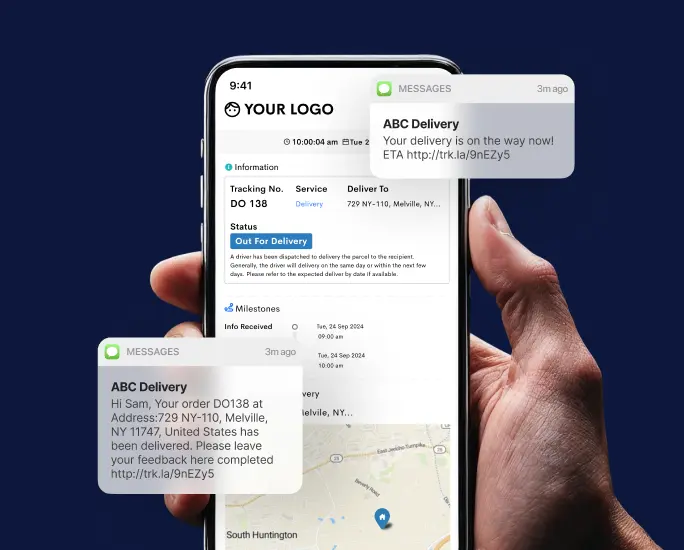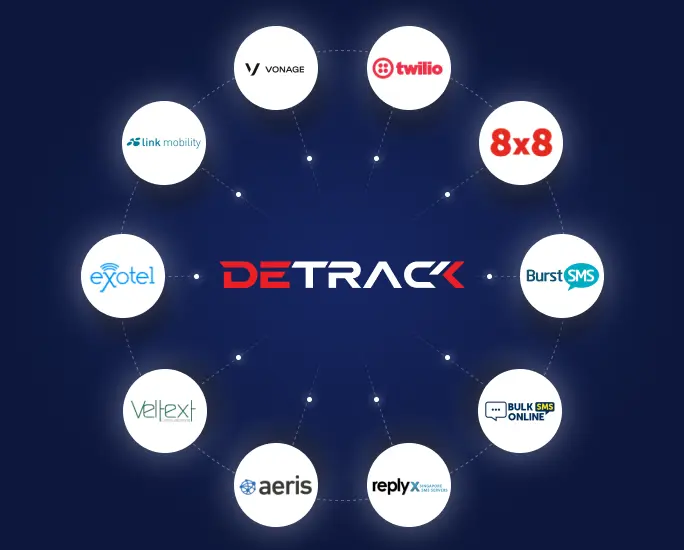When it comes to ecommerce fulfillment, there are a lot of different factors to take into account. From product selection to packing and shipping, getting your fulfillment process right is key to ensuring a smooth online buying experience for your customers.
How do you ensure that your products are delivered to customers in a timely and cost-effective manner? In this ecommerce fulfillment guide, we’ll explore some of the different options available to businesses and offer tips on how to choose the right one for your needs.
We’ll also provide an overview of the key players in the ecommerce fulfillment space and explain how they can help you streamline your operations. So whether you’re just getting started with ecommerce or looking to take your business to the next level, this guide will give you the information you need to make informed decisions about fulfillment.

What Is eCommerce Fulfillment?
eCommerce fulfillment is the process of managing and executing the storage, packaging, and delivery of orders placed by customers online. It’s a complex operation that requires careful planning and coordination to ensure that orders are fulfilled accurately and efficiently.
When planning an eCommerce order fulfillment operation, many different aspects must be considered, from choosing the right warehouse location to selecting the right shipping carrier. However, the most important factor is ensuring that orders are fulfilled on time and that customers are satisfied with the products they receive.
An eCommerce order fulfillment center must be able to handle a high volume of orders and have the necessary infrastructure in place to support it. The center must also be able to scale up or down as needed to meet the business’s demands.
An eCommerce fulfillment center must have a robust inventory management system to track and manage inventory levels. This is critical to ensuring that orders are fulfilled accurately and on time.
The center must also have a strong shipping operation in place to ensure that orders are delivered to customers in a timely manner.
Finally, the center must have a customer service team to handle any questions or concerns that customers may have.

Ecommerce Fulfillment Process
Ecommerce fulfillment is the process of delivering products to customers who have purchased them online. This process can be complex, depending on the size and scope of the ecommerce operation. However, there are some basic steps that are typically involved in fulfilling an online order.
Inventory Management
The ecommerce fulfillment process is a key part of running a successful online business. In order to keep your customers happy and your business running smoothly, it’s important to have a good inventory management system in place.
There are a few different ways to manage inventory for an online store. The most common method is to use a software program like QuickBooks or Excel. These programs can help you track inventory levels, sales, and customer orders.
Another way to manage inventory is to use a physical inventory system. This involves keeping track of products manually, using a system of tags or labels. This can be time-consuming, but it’s often necessary for businesses with a large inventory.
Finally, you can outsource your inventory management to a third-party service. This can be a good option for businesses that don’t have the time or resources to manage inventory themselves.
Warehouse Storage
Once your products have been manufactured, it’s time to store them in a warehouse. This is where ecommerce fulfillment comes in. A good warehouse will have plenty of space for all of your products, as well as the necessary equipment to store and retrieve them quickly and efficiently.
There are a few things to keep in mind when choosing a warehouse for your ecommerce business:
- Location: You’ll want to choose a location that is close to your customers. This will help reduce shipping costs and delivery times.
- Size: Make sure you choose a warehouse that is large enough to accommodate your current inventory and future growth.
- Shipping Services: Choose a warehouse that offers shipping services that meet your needs.
- Security: Make sure the warehouse you choose has adequate security measures in place to protect your products.
There are a few different options available, including public warehouses, private warehouses, and third-party logistics (3PL) providers.
- Public Warehouses: Public warehouses are owned and operated by government agencies or large companies. They are typically large facilities that offer a variety of storage options, including climate-controlled storage, and they usually have their own shipping and receiving services.
- Private Warehouses: Private warehouses are owned and operated by individuals or businesses. They come in all shapes and sizes, from small storage units to large facilities. Many private warehouses offer climate-controlled storage, and some have their own shipping and receiving services.
- Third-Party Logistics (3PL) Providers: Third-party logistics providers are companies that manage the storage and shipping of goods for other companies. They typically have a network of warehouses and transportation resources, and they can provide a variety of services, including order fulfillment, inventory management, and transportation management.

Pick and Pack
After an order is placed on an online store, the next step in the fulfillment process is picking and packing. This involves retrieving the items from inventory and preparing them for shipping.
The pick and pack process can be done manually or using automated technology. If done manually, a picker will go through the warehouse to find the items ordered and place them in a box or shipping container. If using automated technology, such as robots or conveyor belts, the items will be retrieved from inventory and placed on the system to be transported to the packing area.
Once the items are in the packing area, they will be inspected for quality and accuracy. The packer will then choose the appropriate packaging material and pack the items securely. The packed items will then be labeled and readied for shipping.
The pick and pack process is an important step in the ecommerce fulfillment process. It ensures that the correct items are retrieved from inventory and packed correctly to avoid damage during shipping. An efficient pick and pack process can help to improve customer satisfaction and reduce shipping costs.
Shipping
Shipping is one of the most important aspects of running an ecommerce business. Not only do you need to get your products to your customers in a timely and efficient manner, but you also need to choose the right shipping carrier and ensure that your products are properly packaged and protected during transit.
When it comes to shipping, there are a few things you need to keep in mind. First, you need to choose the right shipping carrier. There are several different options, so you’ll need to decide which one is best for your business.
You’ll also need to ensure your products are properly packaged and protected during transit. Finally, you’ll need to track your shipments and ensure that they’re delivered on time.
The first step in shipping your products is to choose the right shipping carrier. There are several different options, so you’ll need to decide which one is best for your business. The most popular carriers are UPS, FedEx, and DHL. Each carrier has its strengths and weaknesses, so you’ll need to evaluate each to see which is best for your needs.
Once you’ve chosen a carrier, you must package your products correctly. First, you’ll need to choose the right packaging material. There are a few different options, but you’ll need to make sure that your products are well-protected during transit. You’ll also need to ensure your packaging is properly sealed and labeled.
After your products are packaged and ready, you must ship them out. You can either ship them yourself or use a fulfillment service. If you ship them yourself, you’ll need to track your shipments and ensure that they’re delivered on time. If you use a fulfillment service, they’ll handle all the shipping and tracking for you.
Once your products have been shipped, you must track their progress. The carrier provides you with a tracking number, which allows you to see where your products are and when they will arrive.

Returns
If a customer is not satisfied with their purchase, they may return the item for a refund. The return process begins when the customer contacts the merchant to initiate a return. The merchant then issues a return authorization, which includes instructions on how to return the merchandise.
The customer then follows the instructions provided to ship the merchandise back to the merchant. Upon receiving the return, the merchant inspects the merchandise to ensure that it is in the same condition as when it was originally shipped. If everything checks out, the merchant processes the return and refunds the customer.
There are a few things to keep in mind when it comes to ecommerce returns:
- Ensure your return policy is clearly stated on your website and in the checkout process.
- Provide detailed instructions on how to initiate a return.
- Inspect returned merchandise carefully to ensure it is in the same condition as when it was originally shipped.
- Process refunds promptly to avoid any customer service issues.
Learn more about reverse logistics (managing returns) in our guide.
eCommerce Fulfillment Strategies
There are a number of factors to consider when planning your eCommerce fulfillment strategy. Perhaps the most important is your product mix.
If you sell primarily small items that can be easily shipped, you’ll have more options than if you sell large items or items that require special handling. Other important considerations include your shipping volume, order frequency, and customer location.
Here are some eCommerce order fulfillment strategies to consider:
In-house
There are plenty of eCommerce fulfillment strategies to choose from, but what’s the best way to get your products to your customers? If you’re looking for full control over your inventory and shipping process, you may want to consider an in-house fulfillment strategy.
An in-house fulfillment strategy gives you complete control over every aspect of your shipping process, from inventory management to order fulfillment. This type of fulfillment strategy is best suited for businesses that have a large volume of orders and can afford to invest in the necessary infrastructure, such as warehouse space and staff.
Pros:
- You have complete control over your inventory and shipping process
- Can be more cost-effective than using a third-party fulfillment center, especially if you have a large volume of orders
Cons:
- Requires a significant investment in infrastructure, such as warehouse space and staff
- Can be more time-consuming and labor-intensive than using a third-party fulfillment center
If you’re considering an in-house fulfillment strategy for your eCommerce business, there are a few things to remember. First, you’ll need to ensure you have the necessary infrastructure, such as warehouse space and staff.
Second, you must develop efficient processes for managing your inventory and fulfilling orders. Finally, you’ll need to be prepared for increased shipping costs if your volume of orders increases.
With an in-house fulfillment strategy, you can save money on fulfillment costs and gain full control over your shipping process. However, it’s important to weigh the pros and cons carefully before deciding.

Dropshipping
Dropshipping is a type of eCommerce fulfillment strategy where businesses sell products without having to carry any inventory. When a customer orders a product from a dropshipping store, the store owner simply contacts the supplier, who then ships the product directly to the customer.
Dropshipping is a great way to start an eCommerce business with little to no upfront investment, and it’s also a great way to add products to an existing online store without having to carry any inventory.
There are a few things to keep in mind when using dropshipping as your eCommerce order fulfillment strategy:
- Make sure you partner with a reliable supplier who can ship products quickly and accurately.
- Communicate with your customers and let them know that their order may take a few extra days to arrive since it’s coming from a different location.
- Add a little bit extra to the price of your product to cover the cost of shipping and any other fees associated with dropshipping.
Dropshipping can be a great way to fulfill orders for your eCommerce business, but it’s important to partner with a reliable supplier and communicate with your customers to ensure a smooth process.
3PL
A 3PL can manage your entire fulfillment operation, from warehousing and inventory management to shipping and returns. This can be a great way to outsource fulfillment and focus on other aspects of your business.
There are a few things to keep in mind when considering a 3PL:
- Make sure they have experience with eCommerce businesses.
- Compare pricing and services to find the best fit for your business.
- Be sure to sign a contract that outlines your expectations and the 3PL’s obligations.
- Make sure your systems are compatible with the 3PL’s platform.
3PL providers offer a number of advantages for eCommerce businesses, including:
- Cost savings: 3PL providers can often provide significant cost savings compared to fulfilling orders yourself. This is because they have economies of scale and can ship orders more efficiently.
- Flexibility: 3PL providers can offer a lot of flexibility in terms of shipping methods, delivery times, and other options. This can be helpful if you have a wide range of products or if you need to ship to multiple locations.
- Expertise: 3PL providers have a lot of experience in fulfillment and can offer valuable insights and advice. They can also help you troubleshoot problems and optimize your fulfillment process.
There are also some disadvantages to using a 3PL provider, including:
- Loss of control: When you use a 3PL provider, you lose some control over your fulfillment process. This can be difficult if you have specific requirements or if you need to make changes.
- Hidden costs: Some 3PL providers have hidden fees or charges that can add up over time. Be sure to ask about all fees and charges before you sign a contract.
- Dependence: When you use a 3PL provider, you become dependent on them for fulfillment. This can be difficult if they experience problems or if you need to make changes to your fulfillment process.
If you’re considering using a 3PL provider for your eCommerce business, be sure to weigh the pros and cons carefully. It’s important to choose a reputable and experienced provider that can meet your needs.

Detrack Can Help With Your Ecommerce Fulfillment Needs
Congratulations on making it to the end of this eCommerce fulfillment guide! By now, you should have a good understanding of the different aspects of eCommerce fulfillment, from storage and packaging to shipping and returns. Keep in mind that the key to success is to find the right balance for your business. There is no one-size-fits-all solution, so don’t be afraid to experiment until you find what works best for you.
Remember, even the most carefully planned fulfillment process will occasionally encounter bumps in the road. The important thing is to stay flexible and adaptable and always keep your customers’ needs as your top priority. With these principles in mind, you’re well on your way to ensuring a smooth and successful eCommerce operation.
If you are looking for delivery management software to help support your e-commerce business, look no further than Detrack. Create an account to try it today.










